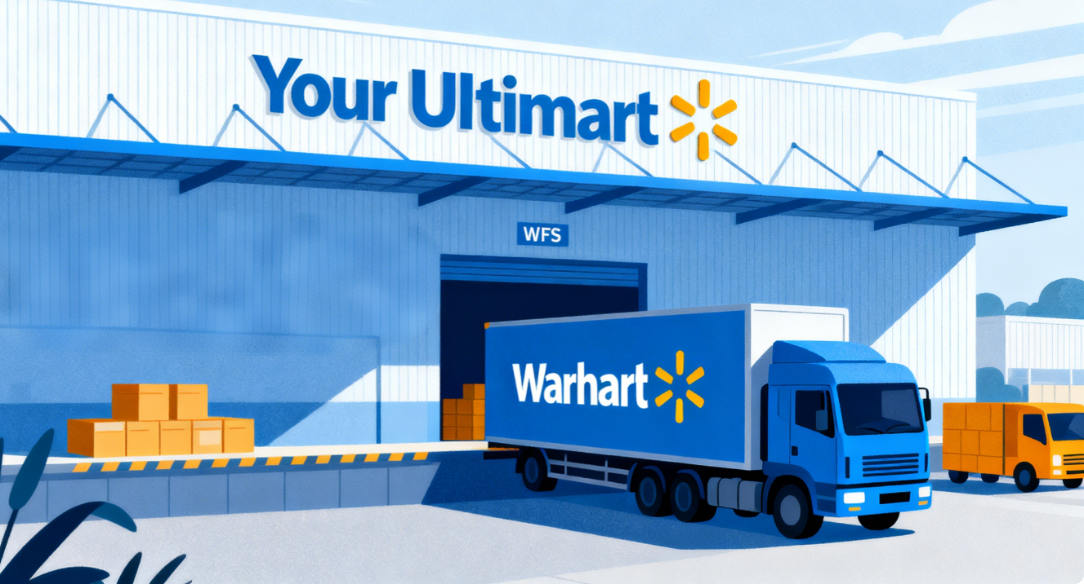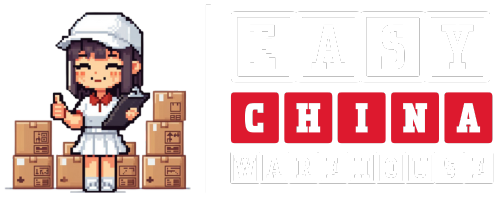Login
Your Ultimate Guide: Shipping from China to Walmart Fulfillment (WFS) Warehouses

Meta Description: Master the process of shipping from China to Walmart Fulfillment Services (WFS). This guide covers freight forwarding, customs, WFS labels, and cost-saving tips for cross-border e-commerce sellers.
Navigating the logistics of getting your products from a factory in China to a Walmart Fulfillment Services (WFS) warehouse in the US can feel daunting. For cross-border e-commerce sellers on platforms like Walmart, Amazon, and Shopify, mastering this supply chain is the key to unlocking scalability and profitability.
A smooth shipment process ensures your inventory is stocked and ready to sell, maximizing your chances of winning the Buy Box and keeping your customers happy. So, how do successful Walmart sellers manage this complex journey? Let’s break it down.
Step 1: The Foundation – Preparation in China
Before a single box is shipped, the groundwork is critical.
- Quality Control (QC): Never skip this. Conduct pre-shipment inspections at your manufacturer’s facility to ensure products meet your specifications and quality standards. This prevents costly returns and negative reviews down the line.
- Proper Packaging and Labeling: Each unit must be prepared according to Walmart WFS requirements. This includes barcode labels (FNSKU) that are scannable and durable. Your third-party logistics (3PL) partner in China can often handle this labeling for you, saving valuable time.
- Creating the Shipment in Seller Portal: You must create your shipment plan within your Walmart Seller Account. This generates the necessary shipping labels and informs Walmart of your incoming inventory.
Step 2: Choosing Your Shipping Method from China
This is where the decision on cost versus speed comes into play. Your choice depends on your product’s size, weight, urgency, and budget.
- Air Freight (Express or Air Cargo):
- Best for: Smaller, lighter, high-value, or time-sensitive products.
- Pros: Extremely fast transit times (5-10 days). Ideal for restocking best-sellers quickly.
- Cons: The most expensive option per kilogram. Can significantly impact your profit margins.
- Sea Freight (LCL or FCL):
- Best for: Large, heavy, and low-cost-per-unit products. The go-to choice for bulk shipping.
- LCL (Less than Container Load): You share a container with other shippers. Perfect for sellers who don’t have enough volume to fill a full container.
- FCL (Full Container Load): You rent an entire container. More cost-effective per unit for very large volumes.
- Pros: Most cost-effective method for large shipments.
- Cons: Slow transit times (30-45 days). Requires more planning and coordination.
Step 3: The Crucial Role of a Freight Forwarder
Most sellers don’t handle international logistics alone. They partner with an experienced freight forwarder from China to USA. A good forwarder acts as your guide, managing the entire process.
Key services a freight forwarder provides:
- Customs Clearance: They prepare and submit all necessary documentation to US customs, including the Commercial Invoice, Packing List, and Bill of Lading. This is a complex area where mistakes can lead to delays or seizures.
- Drayage and Transportation: They coordinate the movement of your goods from the Chinese port to the US port, and then via truck to the final destination—your Walmart fulfillment center.
- Cargo Insurance: They can arrange insurance to protect your valuable inventory against loss or damage during transit.
- Consolidation: If you work with multiple suppliers, a forwarder can consolidate your shipments into one load, reducing costs and simplifying logistics.
Step 4: Navigating US Customs and Duties
Your freight forwarder will handle the details, but you should understand the basics.
- Harmonized System (HS) Codes: Every product has a specific HS code used to classify imports and determine import duties and taxes.
- Importer of Record: As the seller, you are typically the “Importer of Record” and are responsible for paying all applicable duties. Your forwarder will usually pay these on your behalf and invoice you later.
Step 5: Final Mile to the Walmart Warehouse
Once your shipment clears customs, it’s transported to the designated WFS warehouse. Ensure your pallets are built to Walmart’s specifications (height, weight, labeling) to avoid receiving delays or fees. Your freight forwarder or a dedicated US fulfillment partner can handle this palletization for you.
Pro Tips for a Smooth China-to-WFS Shipment
- Plan for Lead Times: Always account for manufacturing time, ocean or air transit, customs clearance, and trucking. Don’t cut it close!
- Build a Reliable Network: Your success depends on reliable partners—your manufacturer, your China sourcing agent, and your international freight forwarder.
- Consider a 3PL with China Presence: Some third-party logistics providers, like Easy China Warehouse, offer end-to-end solutions. They can receive your goods at their warehouse in China, perform QC, handle labeling, manage the international shipping, and deliver directly to WFS, all under one roof.
Conclusion: Streamline for Success
Managing shipments from China to Walmart WFS is a multi-step process that requires expertise and careful planning. By understanding the journey and partnering with the right logistics experts, you can transform a complex challenge into a competitive advantage.
Focus on selling and growing your business, and let the logistics professionals handle the rest. A seamless supply chain is the engine that drives successful cross-border e-commerce.
Ready to Simplify Your Shipments? If you’re looking for a partner to handle your China to US shipping, including seamless delivery to Walmart Fulfillment Centers, contact Easy China Warehouse today. Our integrated freight forwarding and fulfillment services are designed for e-commerce sellers just like you.
